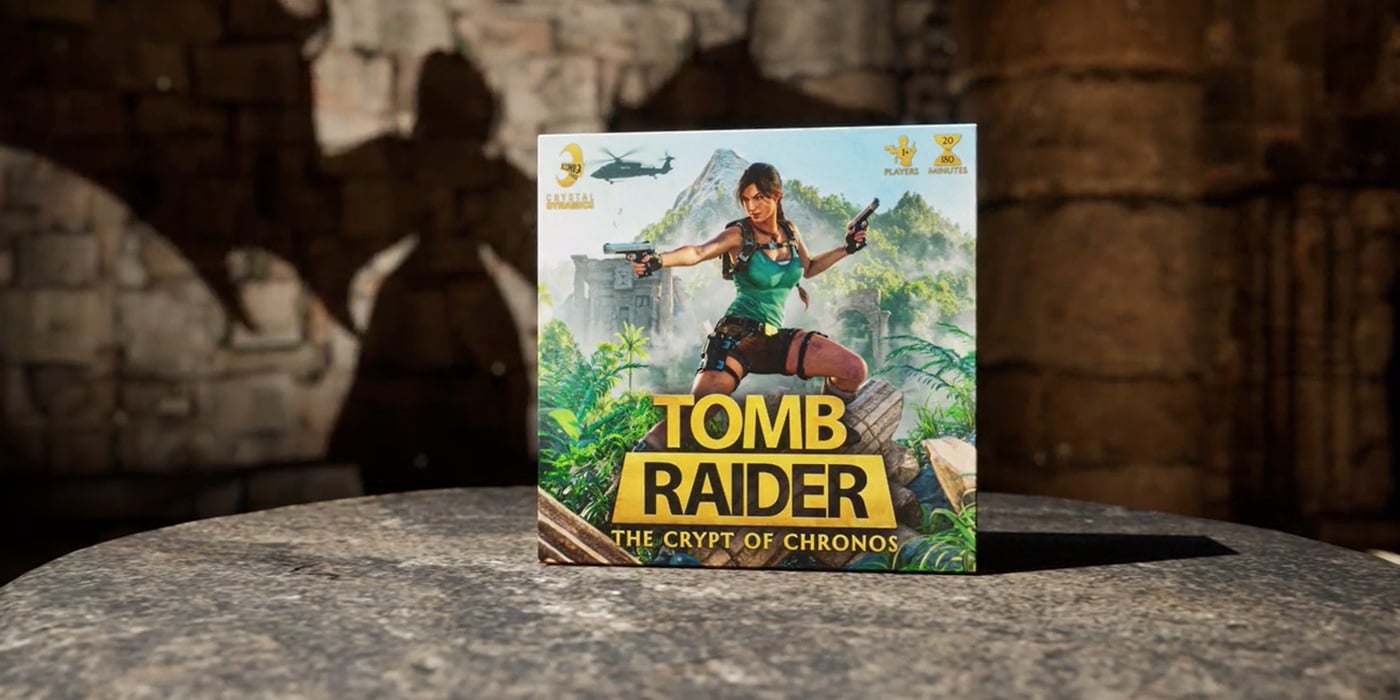Critical Role’s ‘Daggerheart’: A Crunchier Approach To Fiction First Fantasy
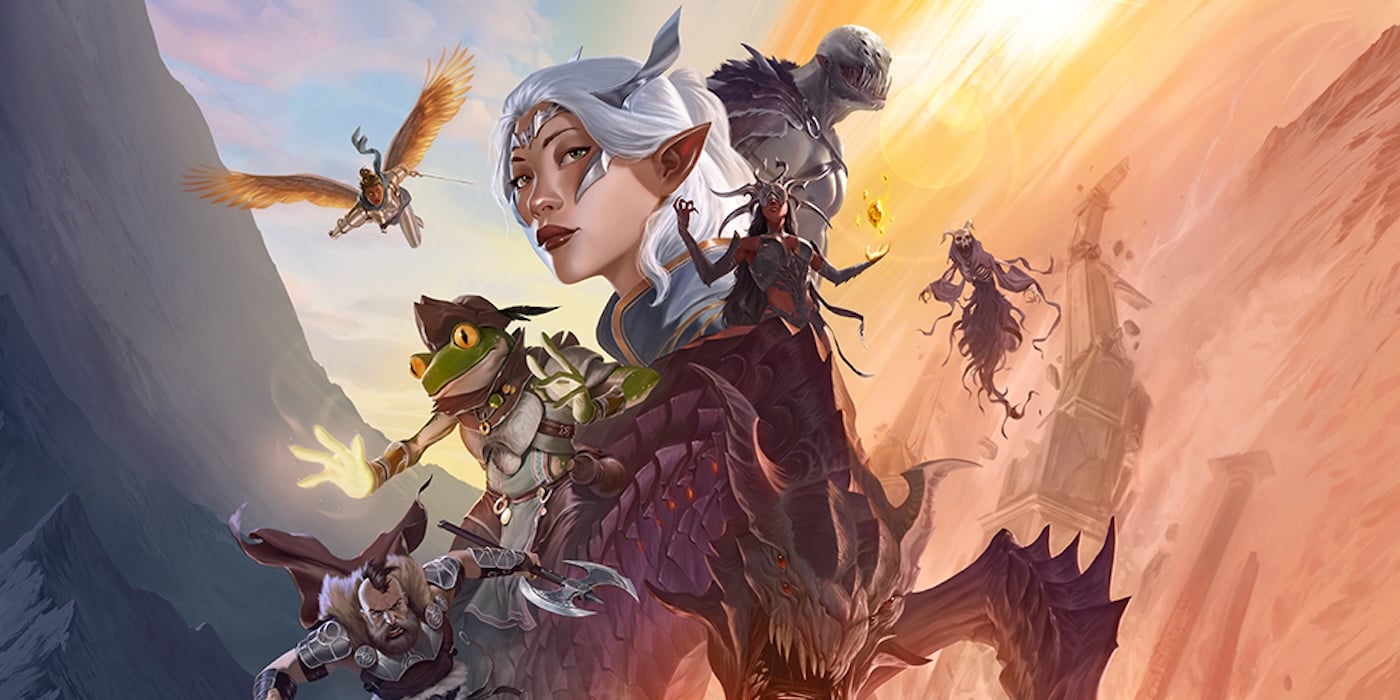
Critical Role’s new RPG, Daggerheart is a narrative-driven, fiction-first RPG with a welcome amount of crunchiness embedded in its rules.
Critical Role takes aim at fantasy adventuring with its new RPG, Daggerheart. It’s a sprawling new system/campaign setting book/monster compendium that wants to give you the tools to create your own sandbox. The game wants to be a lot of things; the kind of game you can settle in with for a long campaign, the kind of thing you can turn to when you want a short mini-series, and even one-shot play is its domain. But more than that, it wants to be a game where you can tell a wide variety of stories.

How much it succeeds at any of these is difficult to tell without actually sitting down and playing a campaign. Something I hope to get through over the course of the year. That’s true of any RPG. When you go to pick up a new RPG, you have either the recommendations of someone who has played it to go off of, or it’s based on vibes and similarities. Eventually, you can get a sense of what a game might be like with different kinds of mechanics.
It’s kind of like knowing that you like Megalovanias, or Roguelikes, or what have you. You can get a feel for what something might be like, and you go with the first impressions it leaves. So with all that in mind, here are the first impressions that Daggerheart left on BoLS HQ.
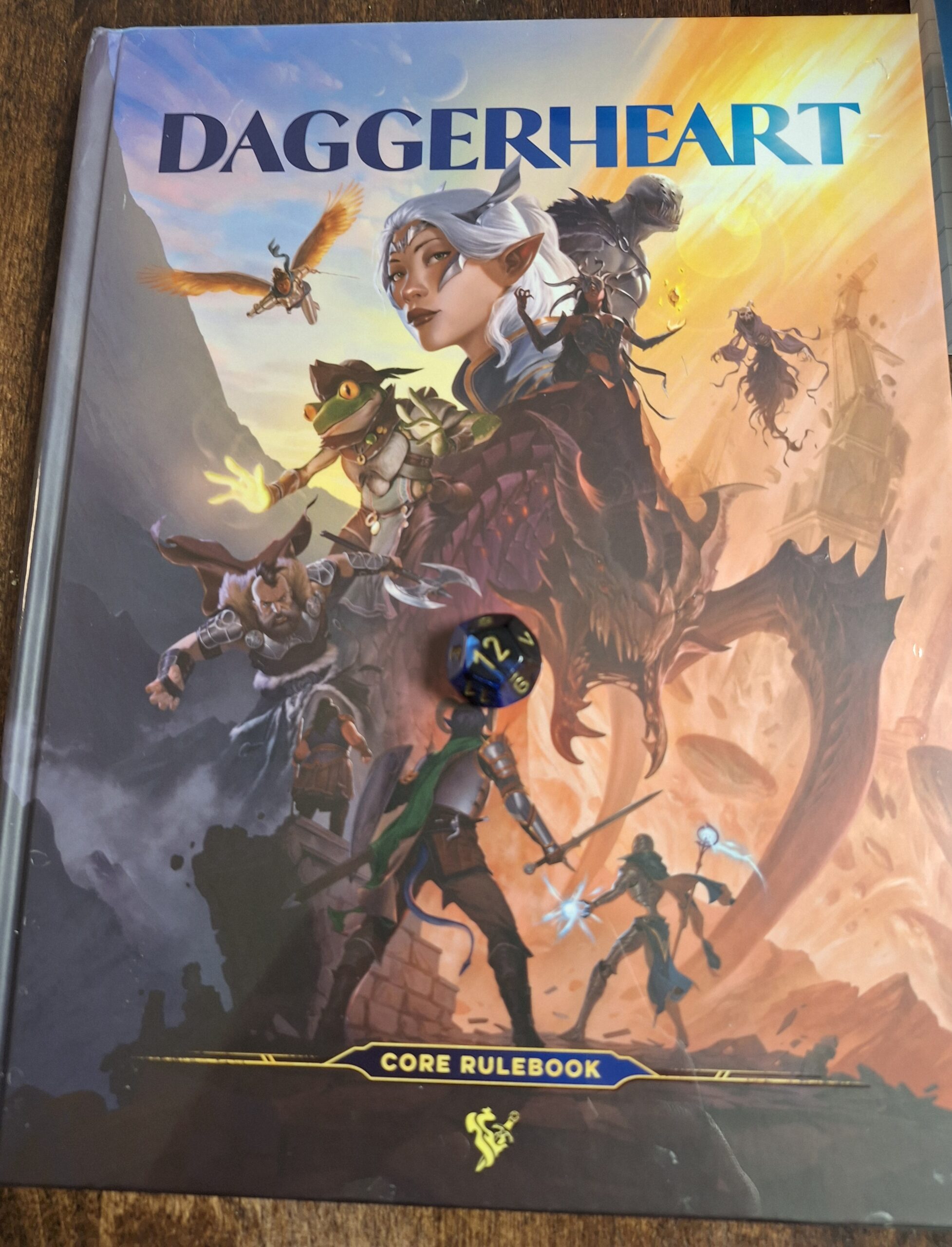
Daggerheart Really Wants The Dice To Tell A Story
Daggerheart has a lot going on. Characters are a mix of archetypes and special powers that come together reminiscent of Powered by the Apocalypse/Blades in the Dark style playbooks. Combat is a flowing narrative with surprisingly crunchy hooks. But to talk about any of it, we have to start with the core mechanic of the game, which can best be summarized as:
Inside you, there are two d12s. One wants you to succeed, the other wants your life to be interesting.
Which is what it all comes down to. The epic highs and lows of high school football rolling dice and figuring out what happens next. The two dice that live inside all Daggerheart characters are Hope and Fear.
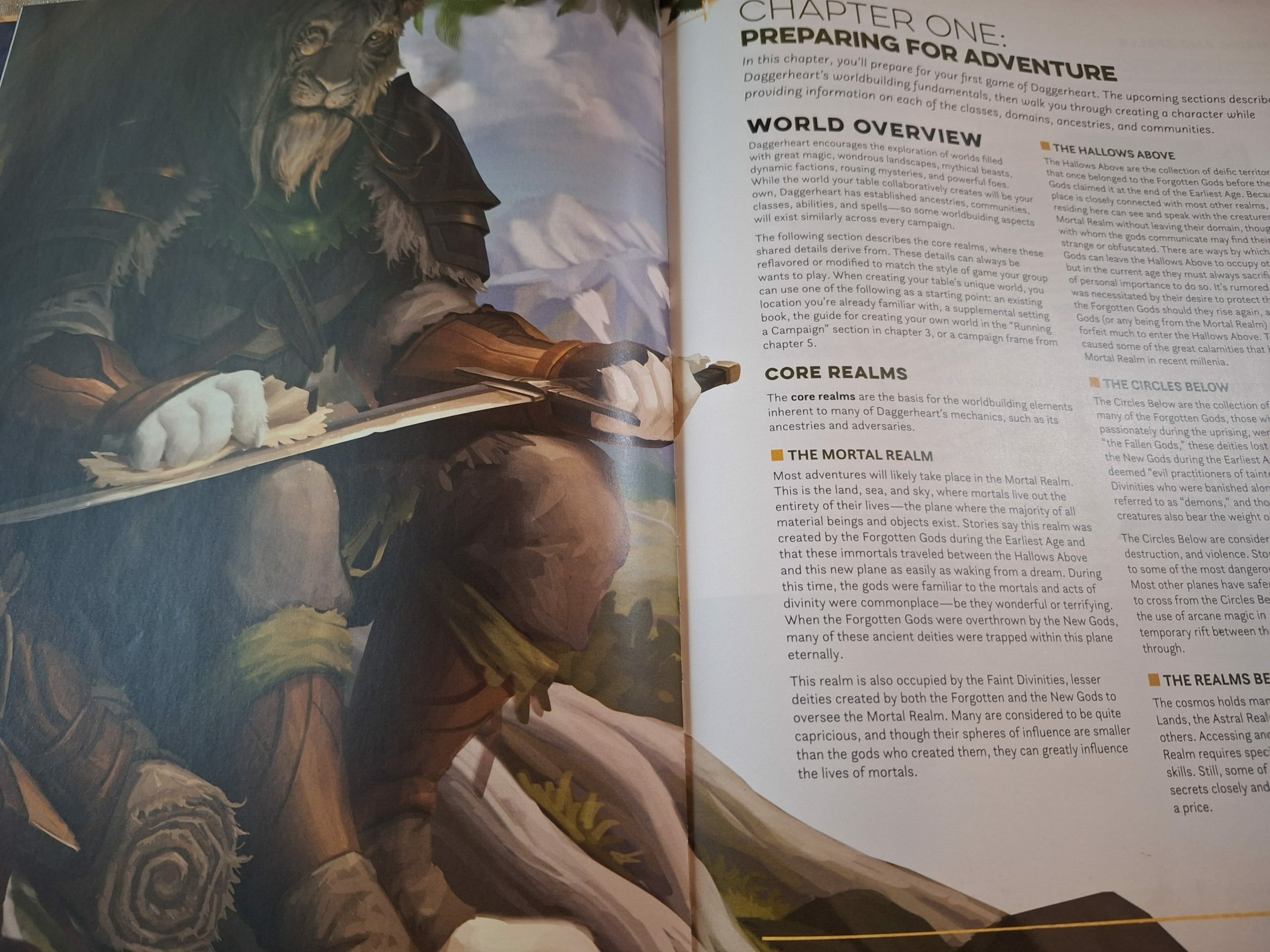
Collectively, these two dice are the Duality Dice that power everything in Daggerheart. And the way they work is pretty simple. Roll both d12s, add them together, plus modifiers, and try to beat a target number. But you want to note which one is higher. If the Hope die is higher, you have rolled with Hope and a good thing happens, despite success or failure. If the Fear die is higher, you guessed it, a bad thing happens, despite success or failure.
It’s an oversimplification of things. But at its core, Daggerheart is all about varying degrees of success or failure. Just like in Powered by the Apocalypse, you have Success, Success with a Complication, and Failure, you have different degrees of success in Daggerheart. And they don’t just have narrative consequences either.
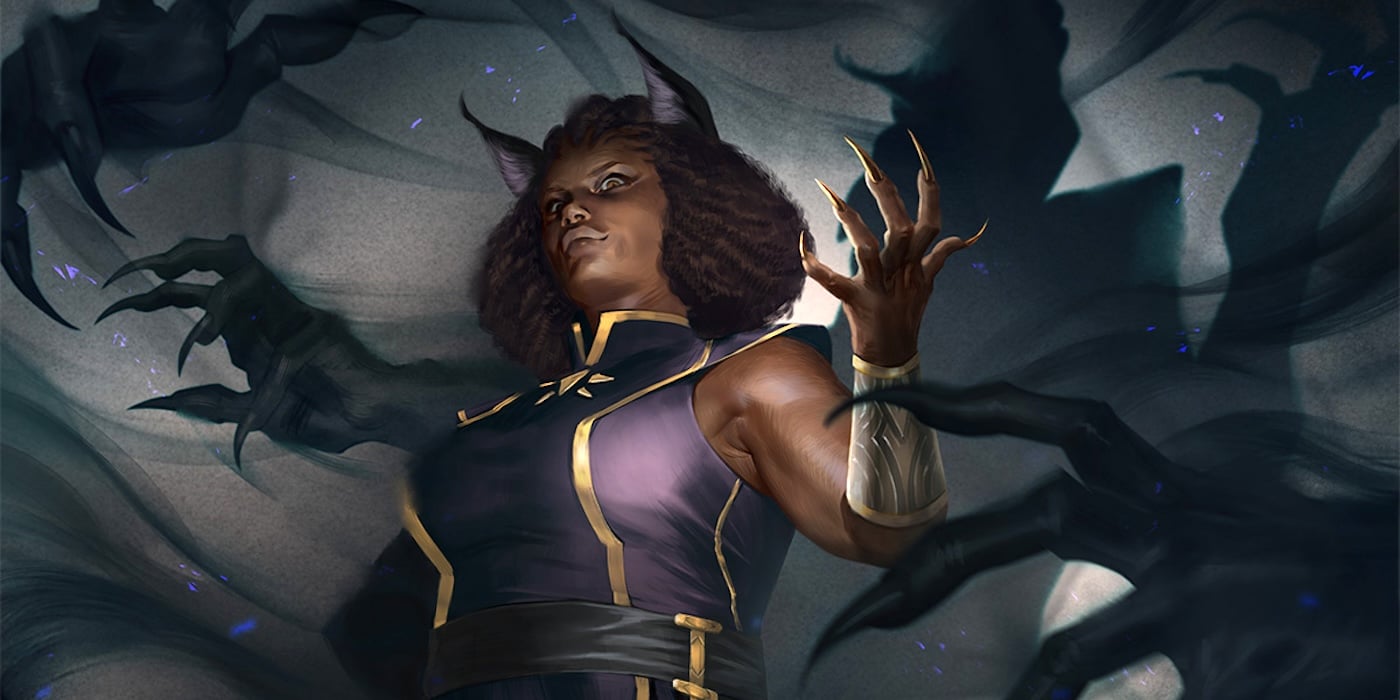
Hope & Fear are both meta-currencies in the game. Players can spend Hope to power their abilities and spells. Every class has a central “heroic moment” type of thing they can do when spending three Hope points. This can range from becoming “unstoppable” in combat to healing your allies in combat.
Fear, likewise, is a currency the GM spends on various things, including activating enemy abilities, making harmful effects from the environment even more dangerous, shift the spotlight of a scene to the bad guys. And so on.
It’s not a bad concept. I like the approach to varying success and failure. Any game that lets you fail but something arguably good still happens for your character is interesting to me. Even if the only good thing that happens is “you get a point to use on your stuff”. And the position of this at the core – the dice both determine the outcome, success or failure and flavor it – highlights Daggerheart‘s central idea: it’s all about the story you tell.
Daggerheart: Fiction First – But Don’t Skimp On The Cronch
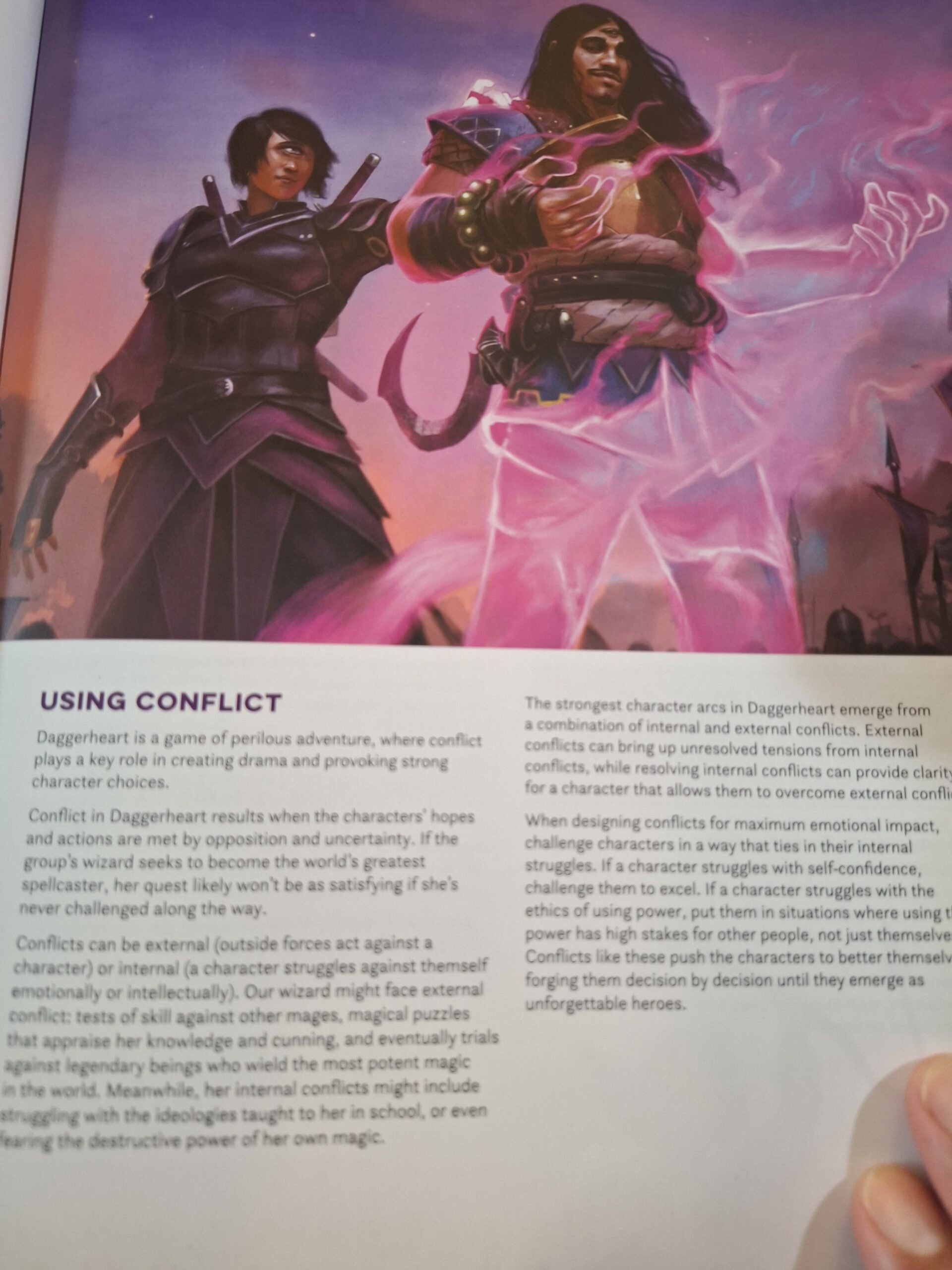
You might be getting some serious PbtA vibes from the description of the mechanics. If you are, you’re right. It does feel very much like something along that particular branch of the RPG tree of evolution. Daggerheart wears its Fiction-First label proudly. It describes itself thusly:
Daggerheart is a heroic, narrative-focused experience that features combat as a prominent aspect of play. The system facilitates emotionally engaging, player-driven stories punctuated by exciting battles and harrowing challenges. The game takes a fiction-first approach, encouraging players and GMs to act in good faith with one another and focus on the story they’re telling rather than the complexity of the mechanics.
But just because the overall game is designed with a focus on fiction, doesn’t mean that the mechanics aren’t complex. Quite the opposite. There’s a lot of crunch to the system. Especially when you get into the heroic combat – you can feel the influence of games D&D (both 5E and 4E) alongside games like Apocalypse World. It’s an interesting commingling of rules philosophies.
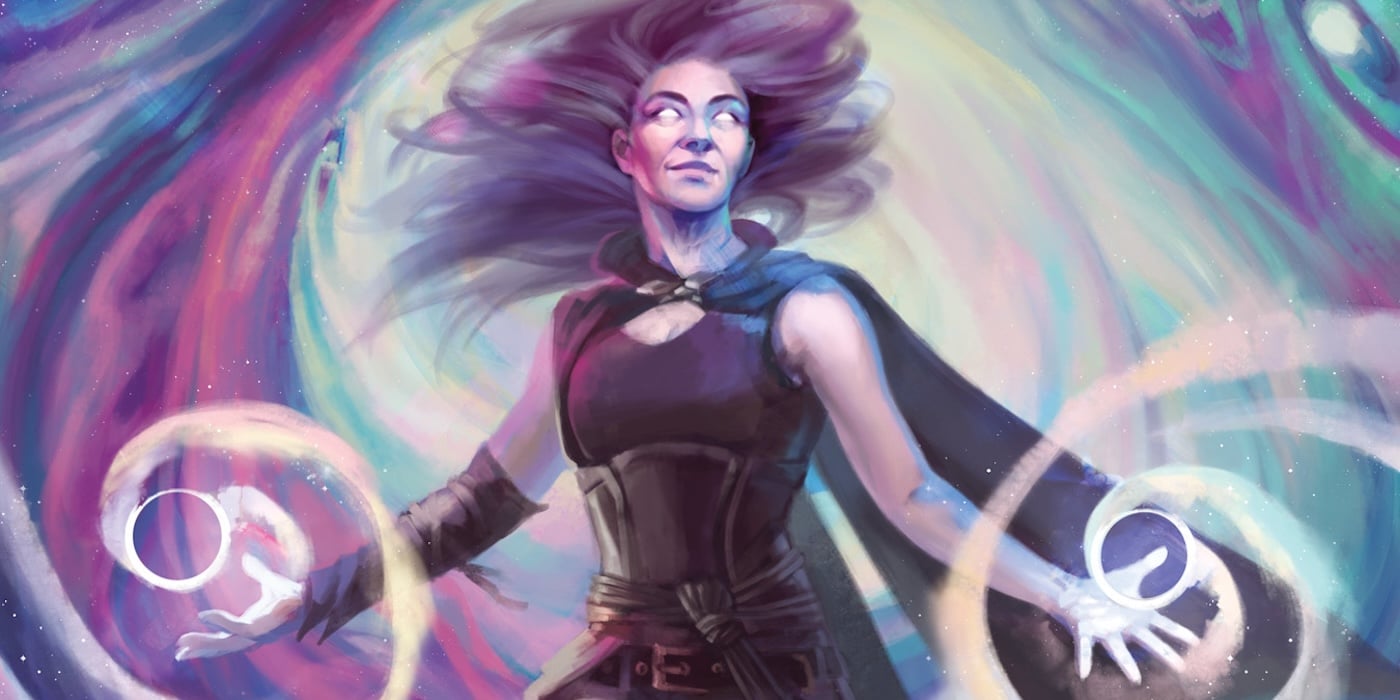
On the one hand, you have a set of GM moves that would feel at home in any PbtA game. Things like “signal an imminent off-screen threat” or “reveal an unwelcome truth or unexpected danger” – all very flowy narrative stuff that is really more of a concrete reminder of what the GM should be doing anyway, but ondensed into a “move”. But then on the other hand, you have adversaries that feel more like something out of the 4E monster manual.
You have various “tiers” of creatures that have much more structured, crunchy rules to them. Like the Cult Adept.
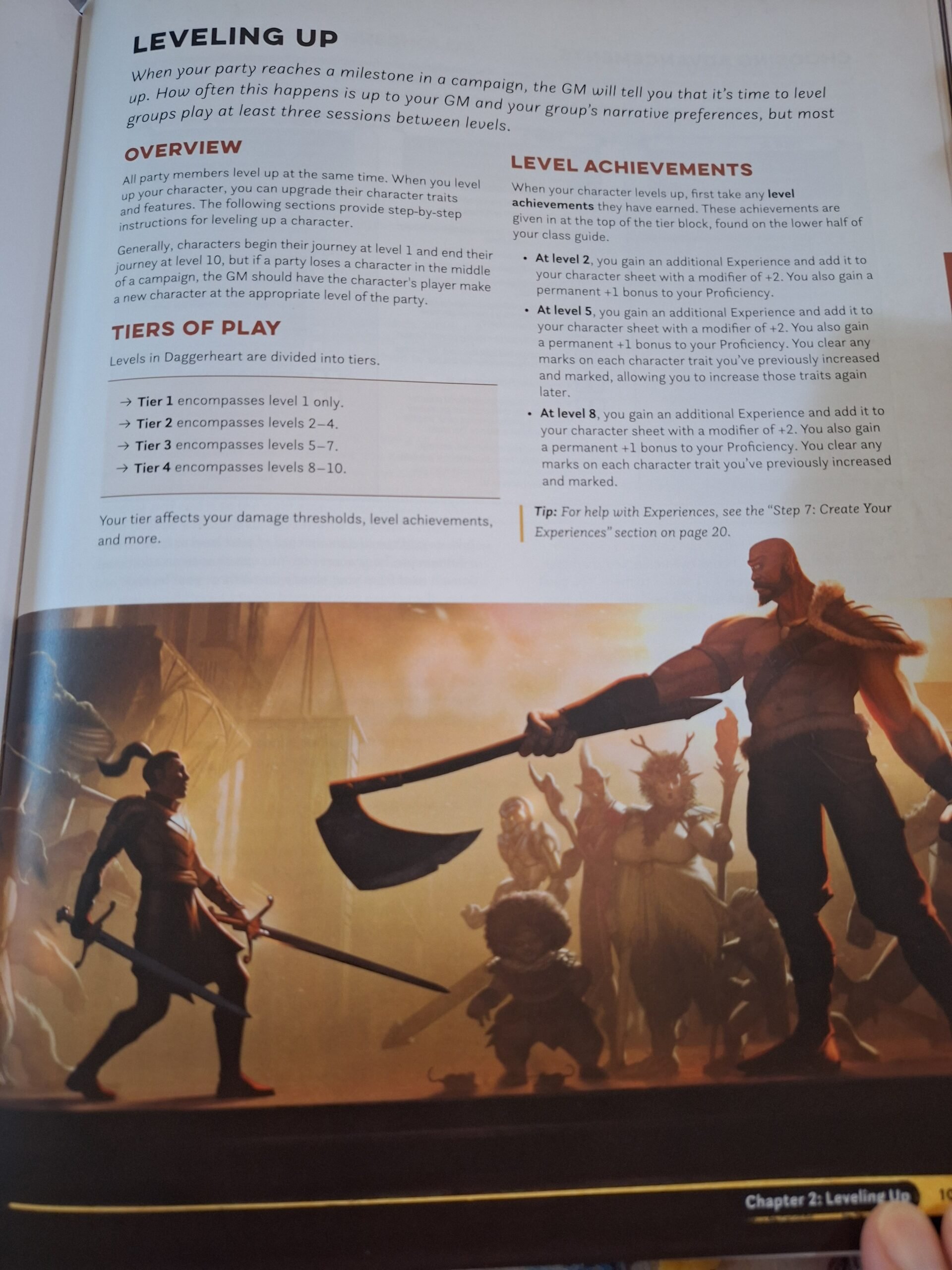
They come with four different abilities. Including abilities to buff their allies and debuff the enemies. They use Daggerheart‘s system of Conditions to their advantage. That’s another thing that feels more like a classic d20-inspired mechanic.
Combat reads like an interesting mix of the two. You don’t have miniatures and grid maps here – but it doesn’t feel like the looser, hazier ideas you get in more fiction-focused games either. It isn’t necessarily good or bad, but I like the approach. I think it’s interesting enough that I really want to dig in and get a feel for it.
Okay But What Kind Of Weird Little Guy Can I Make?
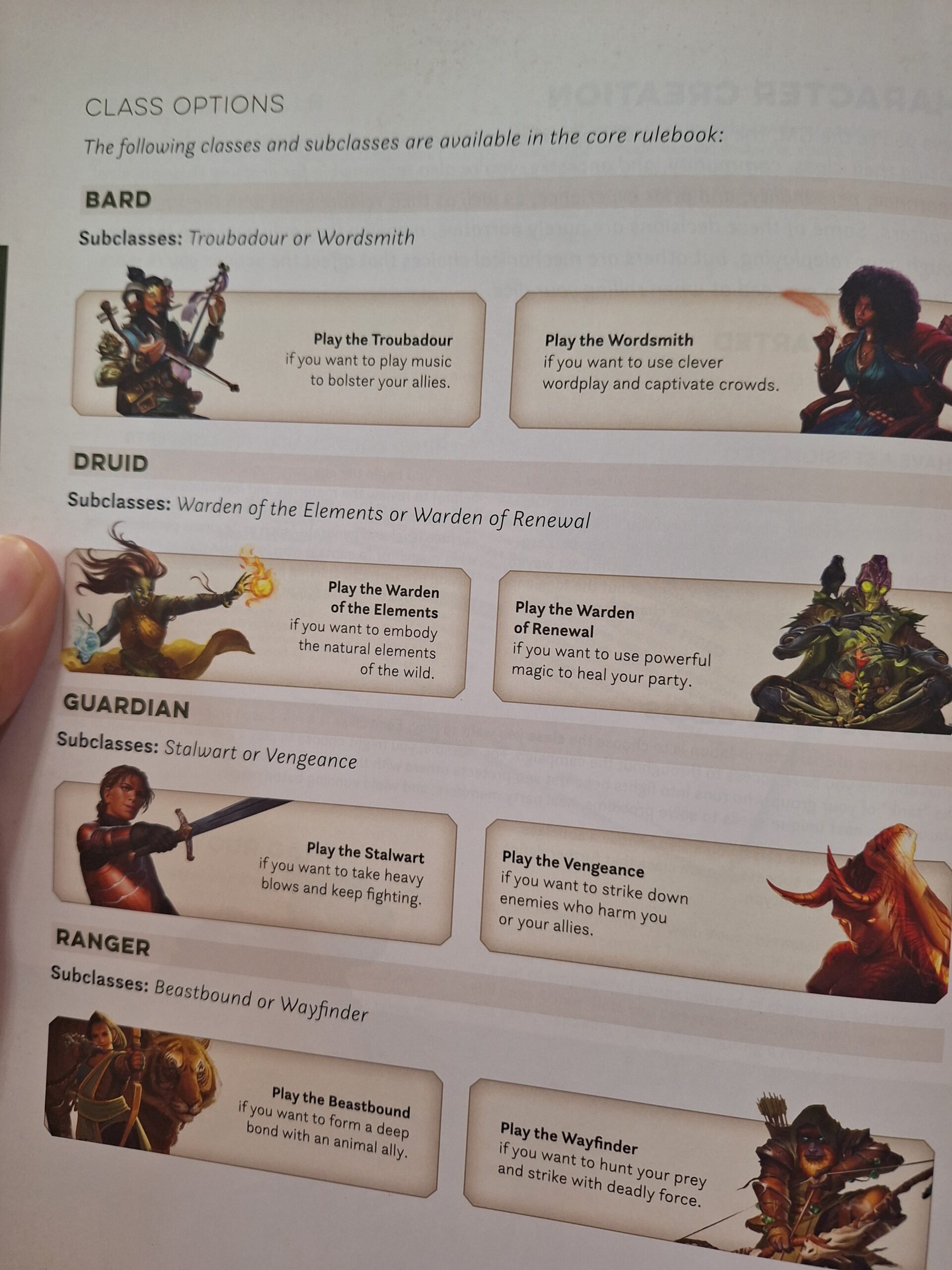
Daggerheart walks a delicate balance. But it also knows exactly what it wants to be: a game about heroic characters that have meaningful stories that feel satisfying. This isn’t a game where you make three different characters in case one dies, and you just sort of have them waiting in the wings. Nor does it shy away from character death – though it does straight up admit that Daggerheart isn’t a particularly deadly game. And that players will probably know this.
And that’s fine, you want to be up front with that stuff – and that informs the GM’s advice for making combats interesting. Daggerheart isn’t Shadowdark, and it isn’t trying to be. Itis a game, that is ultimately about making a weird little guy.
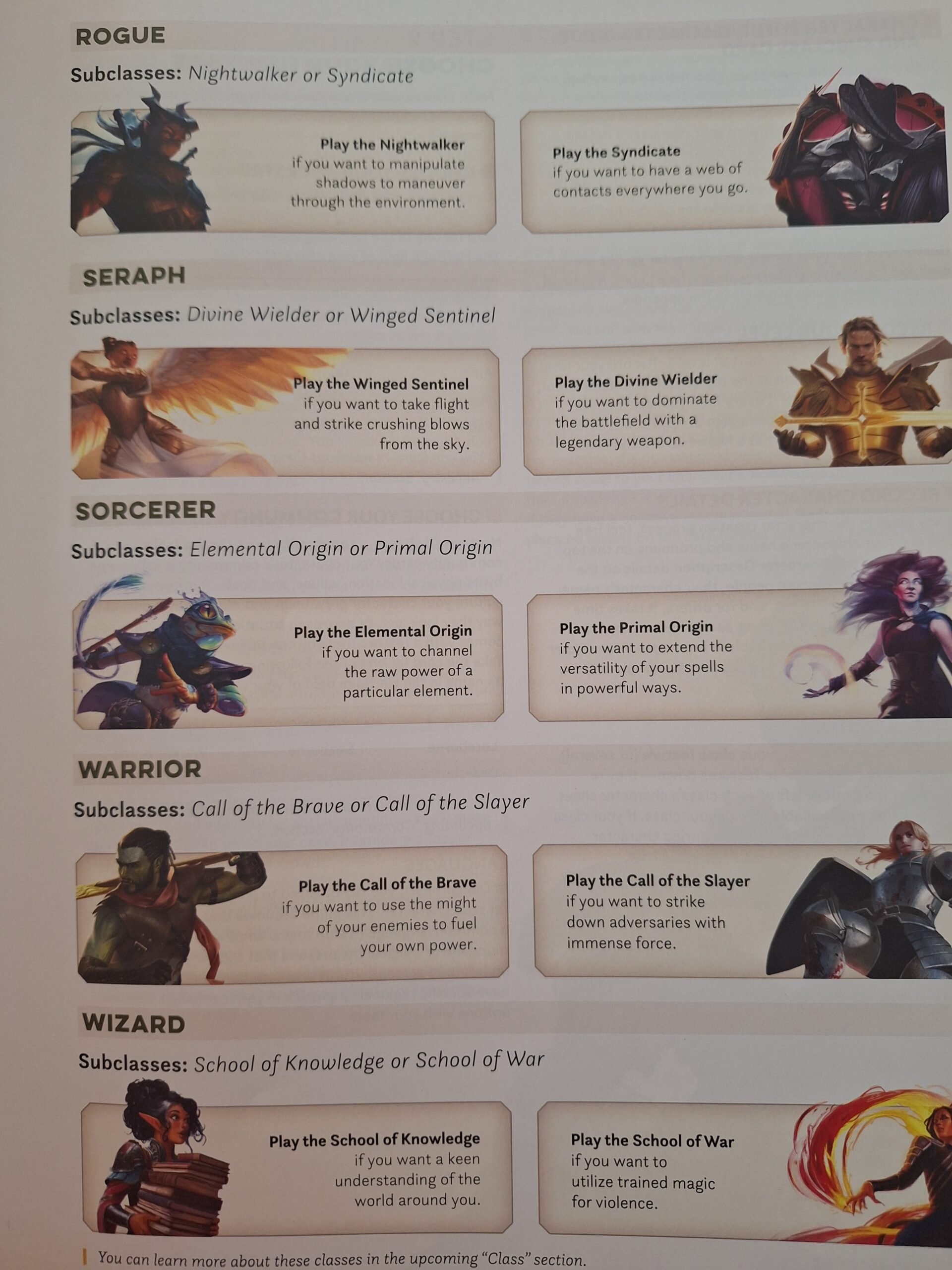
And that’s ultimately what any RPG is about. Making a weird little guy. It’s just a question of are you making a weird little guy who will endure a series of tragedies, or are you making a weird little guy that will die heroically/horribly and alone in a grim world. Daggerheart is definitely more of the former. And wants you to make a weird little guy.
There are nine character classes: Bard, Druid, Guardian, Ranger, Rogue, Seraph, Sorcerer, Warrior, and Wizard. So again, you can see the D&D in its DNA – likewise, you have six stats that are renamed, legally distinct Str, Dex, Con, Int, Wis, and Cha. But each class has its own influence of two Domains – these are selections of powers. You can even multiclass as you go, gaining access to a third domain to build a suite of powers from.
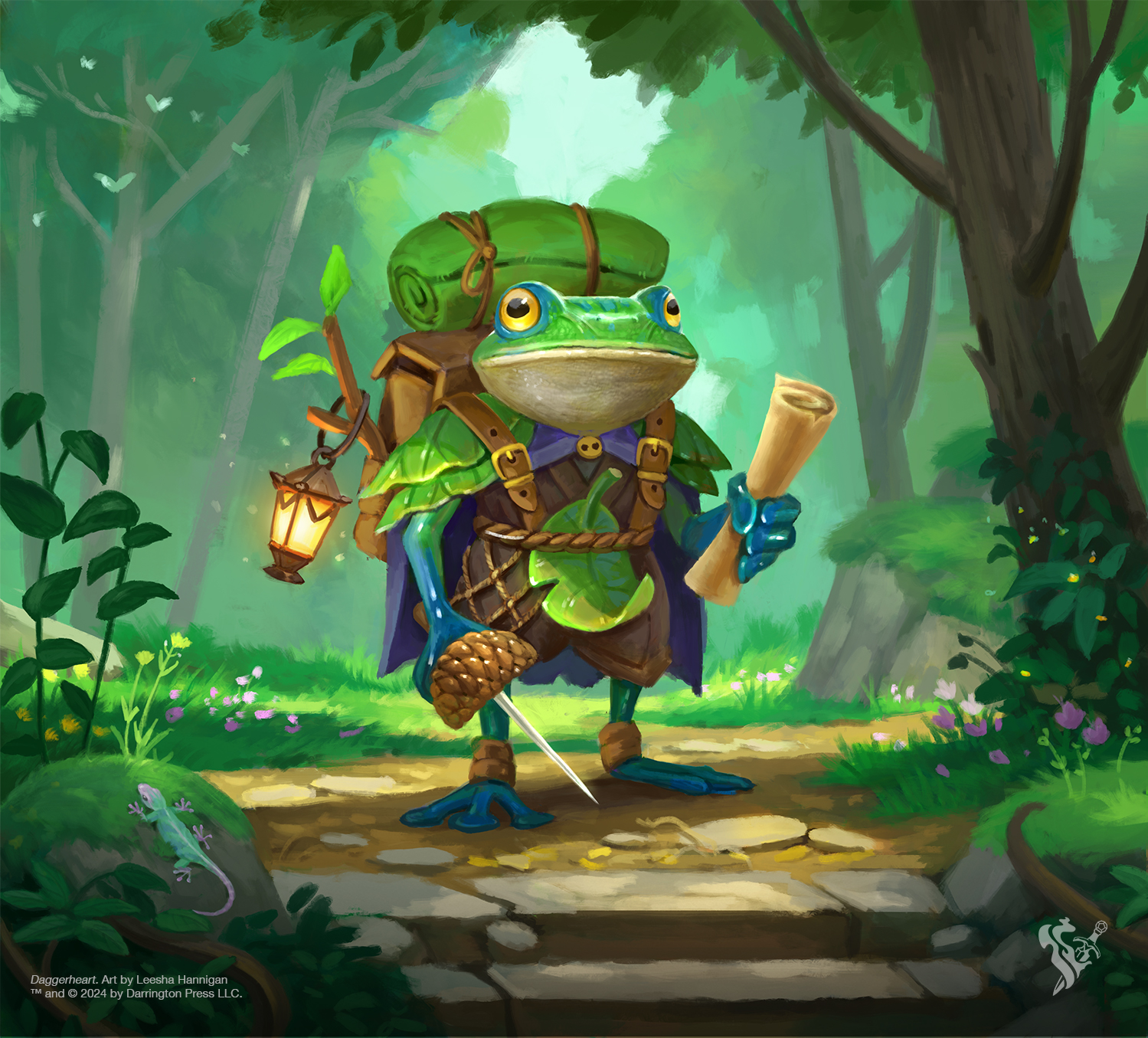
Being a weird little guy in Daggerheart is about using the right powers at the right time, and maybe also using some of your gear and cool equipment. Daggerheart heroes feel a lot like D&D heroes, and that’s not a bad thing. This game is taking a new approach to familiar territory, looking to see if it can see anything that the others haven’t explored yet.
Which is ultimately why I think you might like it. If you want to branch out from D&D, this is an amazing first step – there are a lot of familiar enough elements for both Player and GM, that you’ll not feel totally lost. But this game also feels hackable enough that there’s plenty of new stuff to play with for even the most die-hard, jaded PbtA fans.
We’ll take a closer look at what else the book has to offer in the coming days so you can get a feel for classes and campaign settings. But, in the meantime, enjoy the launch hype, it seems well-deserved.
Hope and Fear are just one example of a Duality. You could just as easily roll with Cookies or Cream.





